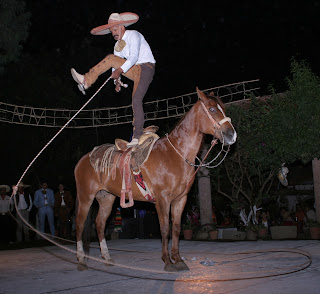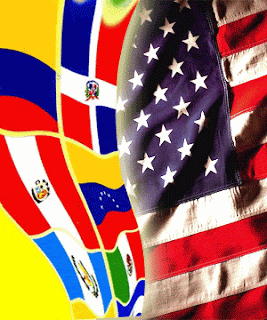Mexico
You see a lot of Mexicans in the
United States; maybe you work with them, go to school with them, or live close
by.
Mexican is the largest group of
Hispanics living in the United States, but must people know very little about
their culture and traditions.
Today, I’ll tell you more about
their culture!
Fiestas (parties) are a big deal! Dancing and singing
are commonly part of family gatherings, bringing the old and young together, no
matter what kind of music is being played, like cumbia, salsa, merengue or the more
Mexican banda.
Dancing is a strong part of the culture.
Mexicans in places like Guadalajara, Puebla, Monterrey, Mexico City and most
middle sized cities, enjoy a great variety of options for leisure.
The standard of living in Mexico is higher than most of
other countries in Latin America attracting migrants in search for better
opportunities. With the recent economic growth, many high-income families live
in single houses, commonly found within a gated community, called
"fraccionamiento". The reason these places are the most popular among
the middle and upper classes is that they offer a sense of security and provide
social status. Swimming pools or golf clubs, and/or some other commodities are
found in these fraccionamientos. Poorer Mexicans, by contrast, live a harsh
life, although they share the importance they grant to family, friends and
cultural habits.
Mexico's national sports are charreria and bullfighting. Almost all
large cities have bullrings. Mexico city has the largest bullring in the world, which seats 55,000 people.
Mexicans also have delicious dishes that are very
unique. Tacos is not the only food mexican eat!
Actually, the tacos and burritos
I’ve eaten in the U.S. are very different from the real Mexican tacos I’ve had
before.
Look at the difference:
American/Mexican Tacos
Mexican Tacos
These are other dishes that
are delicious and very traditional of Mexican cuisine:
A
favorite street food in Mexico City, gorditas are crisp on the outside and soft
within. These savory corn cakes are a great base for all types of toppings,
from pulled pork to shredded chicken.
Corn on the Cob with Lime, Ancho, and Queso Fresco
Slathered
with butter, queso fresco, and ancho chili powder, this recipe for Mexican
street-food style corn on the cob will be a hit at your next barbecue.
Mexican Pickled Vegetables
These
spicy pickled vegetables are like a Mexican version of Italian giardiniera and
are delicious with tacos and as a condiment for any sandwich or burger.
Pozole
A
light Mexican soup so quick to make, you may begrudge the extra time it takes
to chop, dice, or slice the various garnishes.
Hungry
yet??? I am!!!
I hope you enjoy learning about
the Mexican culture! Next time you talk to your Mexican friend ask them to
invite you to have one of this awesome meals and dance some salsa!!
All images from Google Images
All images from Google Images










